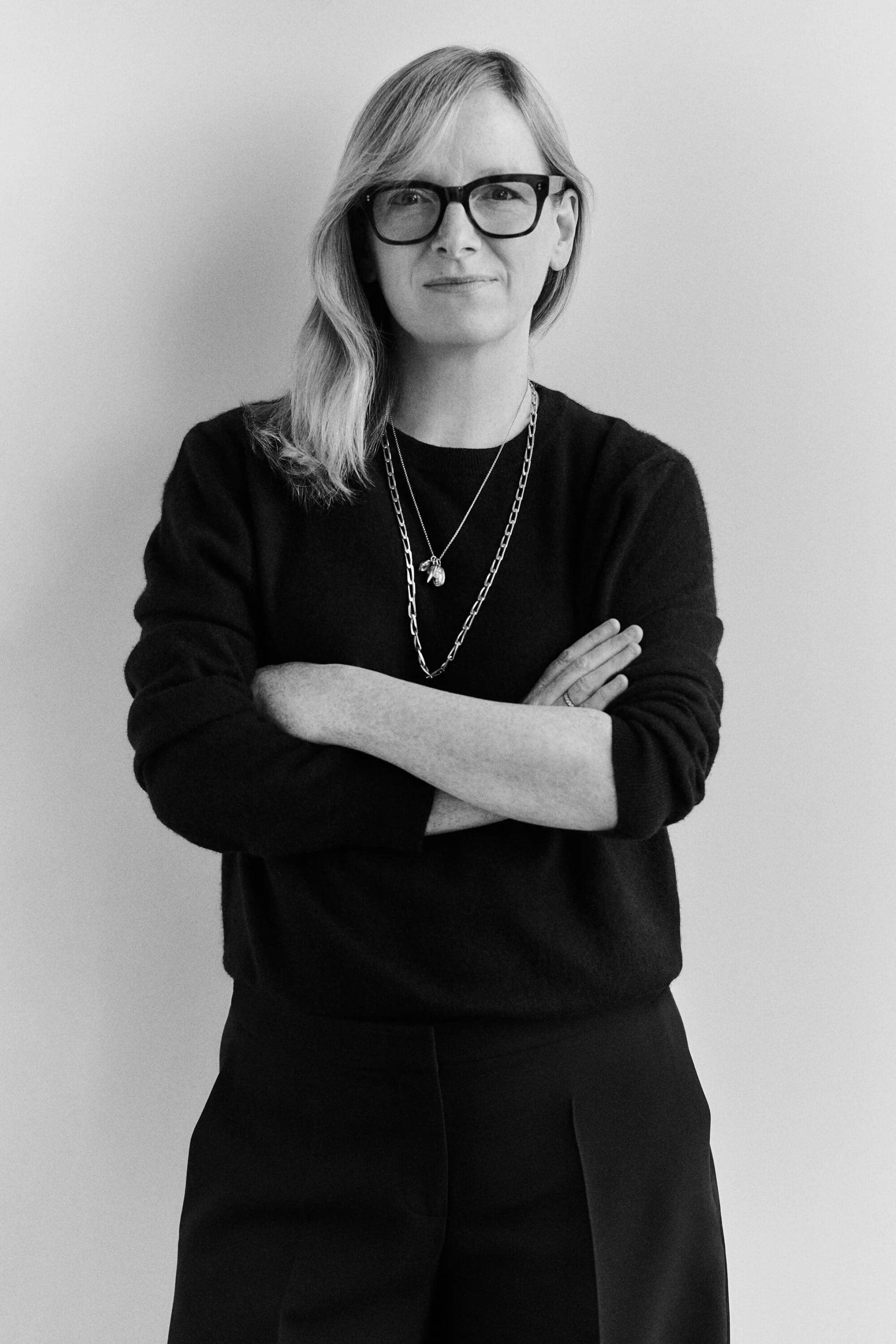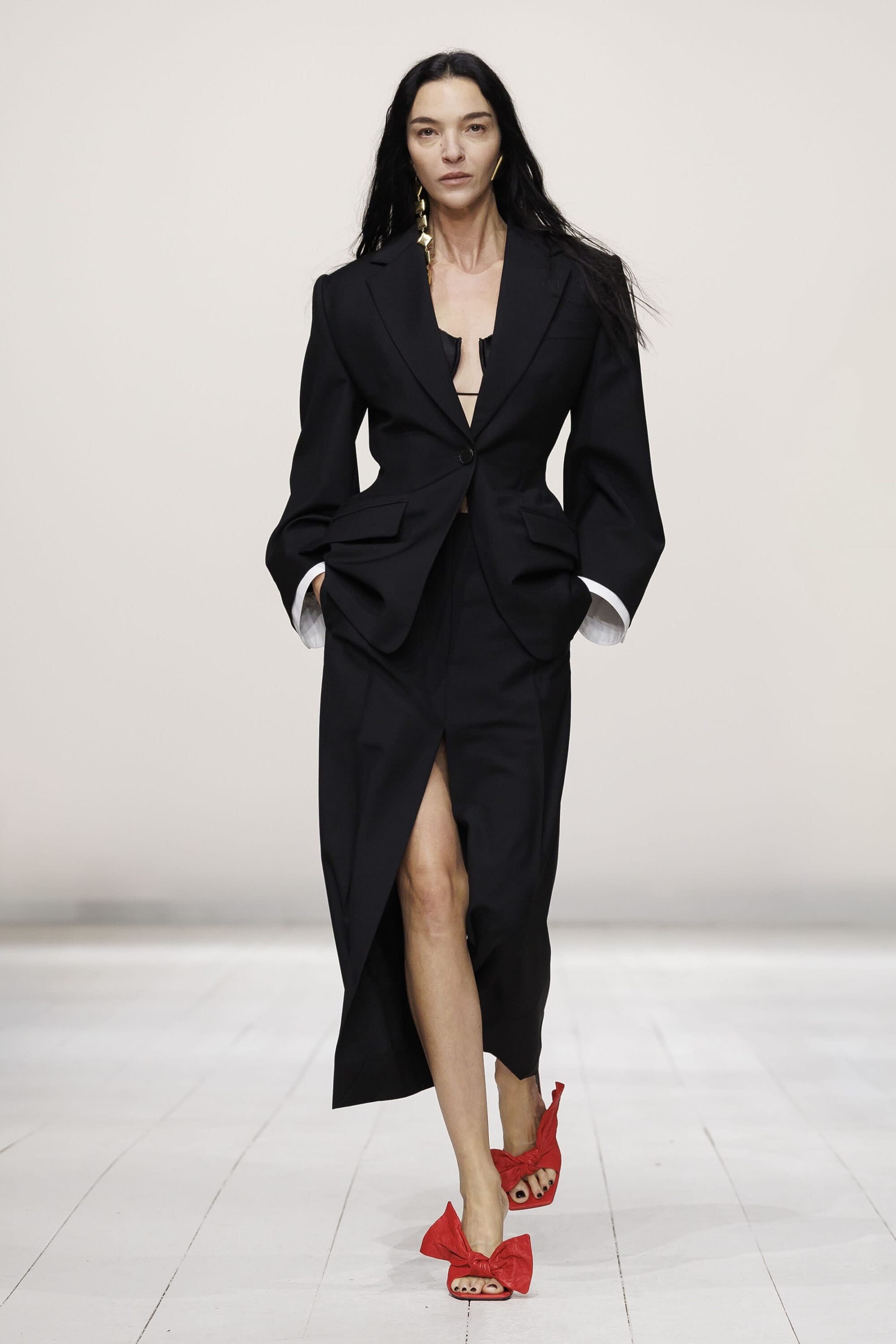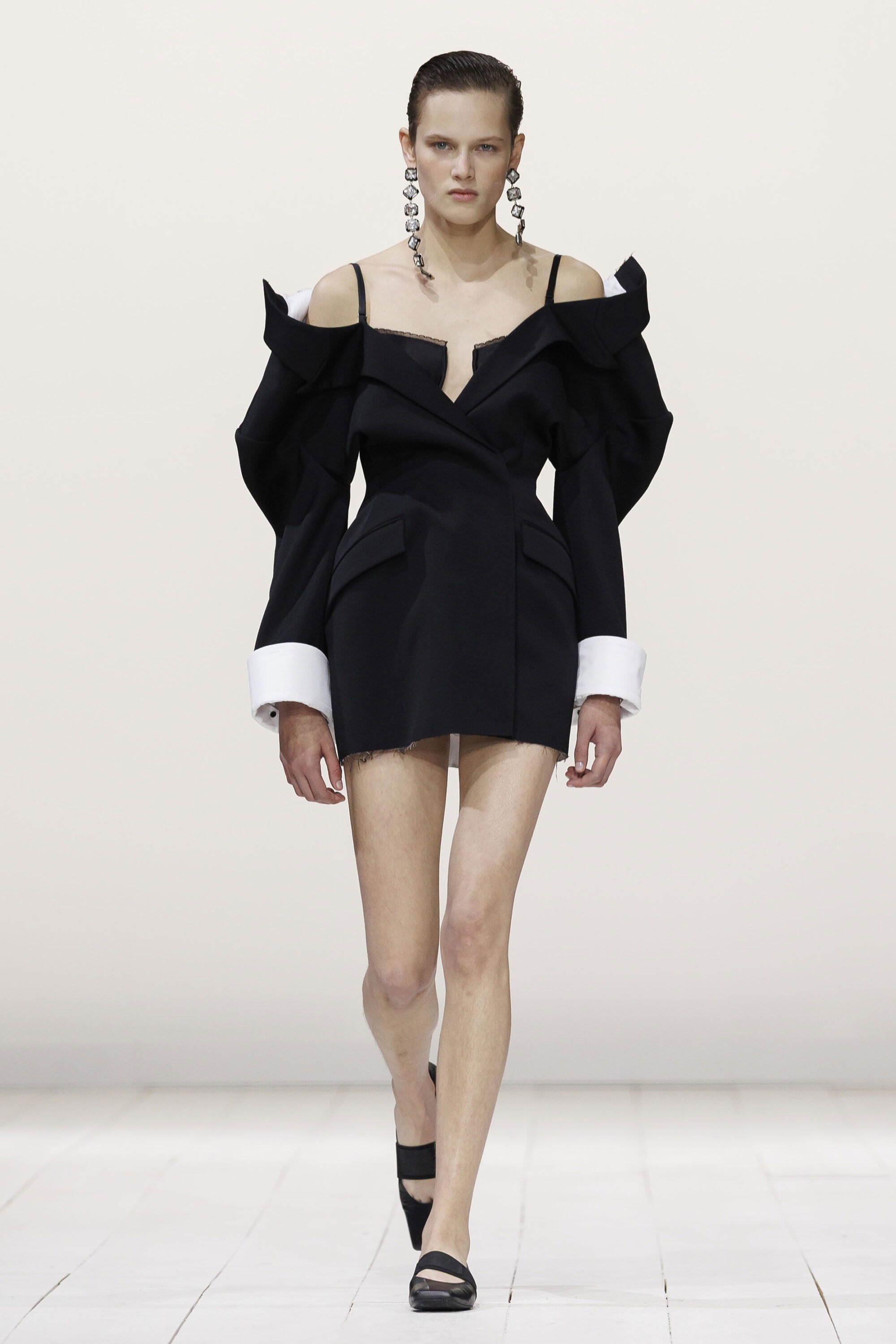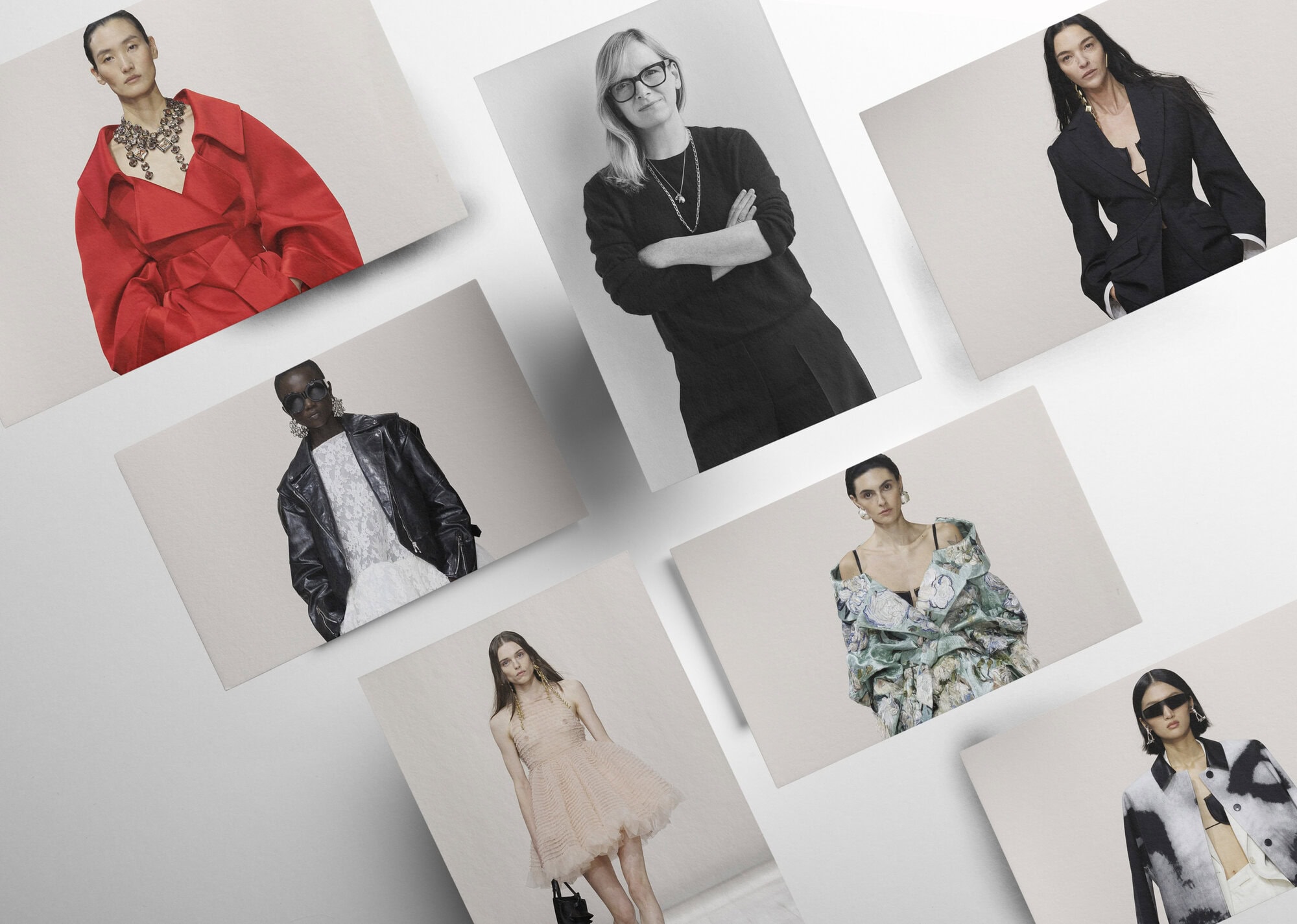With Naomi Campbell, Kaia Gerber, And Eva Herzigova On The Runway And The Clash On The Soundtrack, Burton’s Spring 2026 Show Sharpened Her Vision Of Female Power Through Intimacy And Sensuality
By Kenneth Richard

In one of the season’s biggest shows, Sarah Burton stood calm and radiant in the Givenchy aftermath, tailored yet unpretentious, her warmth matched by a cool confidence. No airs, no theatrics — just the presence of a seasoned designer whose mind is always tuned to the moment. With a twinkle in her eye and her signature humility, Burton spoke of the collection and, more importantly, the idea of femininity she believes fashion must now confront.
I was actually looking at female power. And how often you go to the masculine to empower women. When actually, I wanted to go to the female to empower women.
That conviction defined her Spring 2026 collection. Tailoring — a house signature — was stripped of weight and stiffness, reworked to follow the curves of the body. Jackets, sliced open to reveal collarbones or tipped forward to frame the nape of the neck, turned exposure into a form of intimacy. Dresses, soft but precise, balanced sensuality with elegance. “It was about intimacy,” Burton said. “And the fact that it’s erotic and sensual — an embracing of that.”

Her cast made the message impossible to miss. Naomi Campbell, Kaia Gerber, Eva Herzigova, and Jessica Miller led a multigenerational lineup that underscored Burton’s belief in women as individuals, not archetypes. “I design for women,” she said. “And women are like men — complex, with lots of different emotions, lots of different needs. I want to make sure that I have things for all those moments in a woman’s life.”
The show opened with the raw chords of The Clash’s Straight to Hell, punk energy crackling through the grandeur of a Parisian house. The soundtrack tilted between rebellion and intimacy, mirroring the balance of softness and toughness on the runway. As the music shifted, so did the mood: eroticism tempered by elegance, toughness smoothed into vulnerability.
Burton’s codes from her first Givenchy collection returned, but honed with greater clarity: the interplay of sharp and soft, tailoring and drape, exposure and concealment. One jacket, worn by Maria Carla Boscono, nodded to her earlier work but was so light it seemed to float. “I took everything away,” Burton explained. “It’s just the woman’s curves that give you the silhouette.”

Volume and proportion played equally crucial roles. Collars tipped forward, jackets sliced to exaggerate the neckline, hems cut to lengthen the body’s line. “I like scale a lot,” she admitted. To Burton, proportion isn’t just a technical exercise but a tool of intimacy — revealing the back of a neck here, covering but elongating the body there. “It gives you this kind of very important collar, but then you reveal the skin at the back of your neck,” she said. “So there was this sort of sense of how much skin do you show, how much do you not show — a sense of intimacy, a sense of beauty.”
That stripping away of excess felt deliberate — a designer speaking against noise. “There’s a belief that you have to be like a man to be powerful,” she said. “And there’s a lot of noise in the world at the moment. But maybe it’s the skills that are not so obvious — the embracing of femininity, of emotional intelligence — that we need to be using.”
Burton’s own history gives her words weight. For two decades she shaped the legacy of Alexander McQueen, first as Lee McQueen’s trusted right hand, then as his successor. She defined the brand after his death, balancing its gothic drama with her own clarity of line. In 2024 she was appointed to helm Givenchy, inheriting another house steeped in history. “You can’t pretend to be somebody else,” she said. “You absorb the spirit of the house, but you stay true to your creative path.”
That path, at Givenchy, is now unmistakable. Her Spring 2026 show reinforced the codes she established last season — the interplay of tailoring and softness, the tension of skin revealed and concealed — but sharpened them with greater clarity.
In a fashion climate that often equates power with hardness, Burton’s vision feels radical: empowerment drawn not from masculinity but from the feminine itself. Intimacy, sensuality, emotional intelligence — these are her tools. And with a runway that mixed icons and new guard, set to the strains of punk rebellion, she made it clear: femininity at Givenchy is not fragility. It is force.
